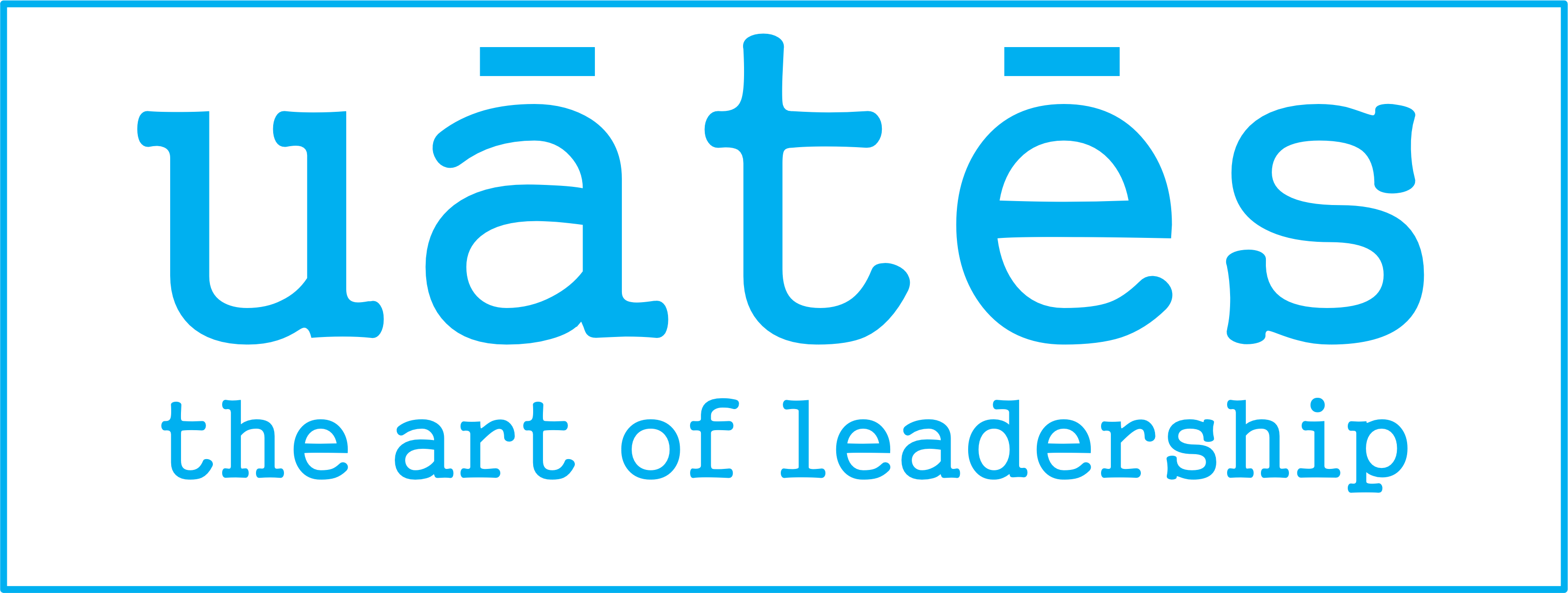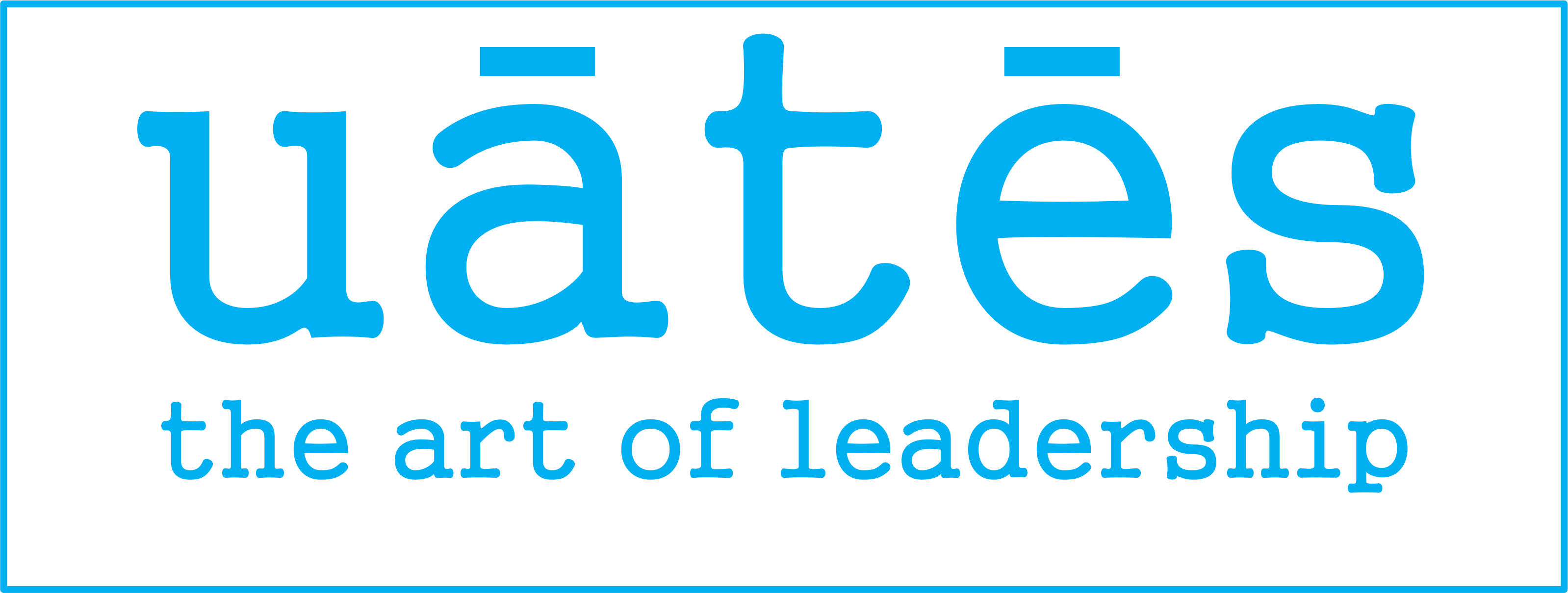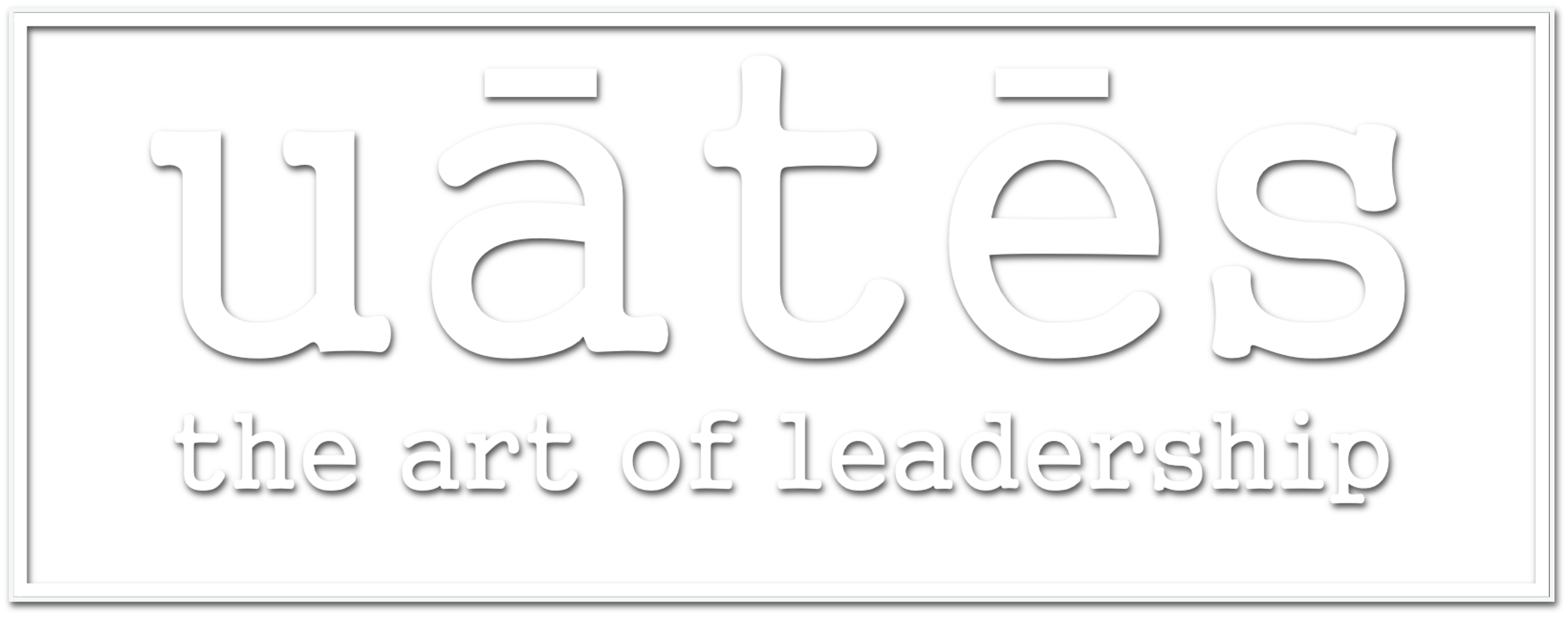
In today's dynamic and ever-changing world, it is essential for leaders to continuously develop and transform to remain relevant.
We understand the challenges and complexities of this journey and offer specialized support to elevate leaders to the next level. Our programs are designed to guide professionals, executives, managers, and leaders in achieving meaningful and future-oriented personal and professional transformations.
With deep knowledge and practical experience in management, leadership, culture, and personal development, we bring a wealth of expertise to address complex development issues. Our approach is holistic, focusing on sustainable changes that make a real difference. We strive to help leaders achieve transformations that are not only future-oriented but also meaningful and impactful. We look beyond superficial changes to drive profound improvements.
Every leader is unique and has specific needs. Therefore, we offer tailor-made solutions that align with the unique challenges and goals of your organization. We take a comprehensive view and understand that true transformation goes beyond just processes and structures. Personal growth, leadership development, and cultivating potential are crucial elements in our approach.
We are available for organizations in both the private and (semi-)public sectors in the Netherlands. As trusted advisors, we provide strategic advice and support in making crucial decisions. We offer coaching and counseling to unlock the full potential of leaders and guide them through challenging transitions, leading and managing their development journey from start to finish.
Are you ready to elevate your leadership to the next level? Contact us today to discuss how we can support you in your transformation process. Together, we build a future-oriented and meaningful organization that is ready for the challenges of tomorrow.
We understand the challenges and complexities of this journey and offer specialized support to elevate leaders to the next level. Our programs are designed to guide professionals, executives, managers, and leaders in achieving meaningful and future-oriented personal and professional transformations.
With deep knowledge and practical experience in management, leadership, culture, and personal development, we bring a wealth of expertise to address complex development issues. Our approach is holistic, focusing on sustainable changes that make a real difference. We strive to help leaders achieve transformations that are not only future-oriented but also meaningful and impactful. We look beyond superficial changes to drive profound improvements.
Every leader is unique and has specific needs. Therefore, we offer tailor-made solutions that align with the unique challenges and goals of your organization. We take a comprehensive view and understand that true transformation goes beyond just processes and structures. Personal growth, leadership development, and cultivating potential are crucial elements in our approach.
We are available for organizations in both the private and (semi-)public sectors in the Netherlands. As trusted advisors, we provide strategic advice and support in making crucial decisions. We offer coaching and counseling to unlock the full potential of leaders and guide them through challenging transitions, leading and managing their development journey from start to finish.
Are you ready to elevate your leadership to the next level? Contact us today to discuss how we can support you in your transformation process. Together, we build a future-oriented and meaningful organization that is ready for the challenges of tomorrow.

uātēs:
You shall share the universal wisdom, prophecy, power, and love within you for the benefit of the people in the world around you.
You shall share the universal wisdom, prophecy, power, and love within you for the benefit of the people in the world around you.
The art of leadership:
Leadership as a personal and unique form of art of living that provides others with meaning, direction, and trust.
Leadership as a personal and unique form of art of living that provides others with meaning, direction, and trust.
Uātēs organizes retreats for people looking for deepening and growth in both their personal and professional development, with a focus on leadership and culture.
Uātēs designs and realizes learning trajectories in the field of professionalization leadership, management, and culture with a lot of attention for your personal and professional development.
Uātēs supports organizations in their development and transformation tasks from a analytical psychodynamic perspective.
Uates is a community of involved professionals who want to further develop the field of organizational development, leadership development and culture from a analytical psychodynamic perspective.
Make your leadership reality!
uātes the art of leadership
Leadership. The ability to bind people. To give people direction. To give people perspective. To make people feel heard and seen. To make people part of something bigger than themselves. To let people form a community together. To provide people with security in their existence. To offer people the space and support to develop.
This is important in people's life and work. That is already difficult in the formal relationship between people and organisation. But in social reality, where we shape relationships through communication and interaction, this is much more difficult. Our individual perspective and the collective perspective determine what we think and feel when it comes to our position and our meaning.
The space for people to develop and develop is decisive for the success of an organization. Those organizations that manage to achieve this achieve the best results. Have the healthiest employees. The highest productivity. The lowest absenteeism. Less turnover, and a greater attraction to potential employees.
Your leadership is decisive in getting this done. And your leadership is at its most powerful when you know and feel what "your" leadership is. And how you can really use your leadership.
Make your leadership a reality. Use your personal talent to shape your future. Make your dreams come true. Grow beyond your own limitations and become the leader you already are deep down. Unlock your unique potential and experience what energy and flow give you in your life. Let boundaries fade and develop yourself into something you didn't think possible.
This is important in people's life and work. That is already difficult in the formal relationship between people and organisation. But in social reality, where we shape relationships through communication and interaction, this is much more difficult. Our individual perspective and the collective perspective determine what we think and feel when it comes to our position and our meaning.
The space for people to develop and develop is decisive for the success of an organization. Those organizations that manage to achieve this achieve the best results. Have the healthiest employees. The highest productivity. The lowest absenteeism. Less turnover, and a greater attraction to potential employees.
Your leadership is decisive in getting this done. And your leadership is at its most powerful when you know and feel what "your" leadership is. And how you can really use your leadership.
Make your leadership a reality. Use your personal talent to shape your future. Make your dreams come true. Grow beyond your own limitations and become the leader you already are deep down. Unlock your unique potential and experience what energy and flow give you in your life. Let boundaries fade and develop yourself into something you didn't think possible.
(Self)examination is central to uates. Your leadership in relation to your change and development task. That's what we're going to get started with. Together with the other participants who will work on their own leadership issues. We learn from each other by sharing, questioning and developing new insights together. Insights that we will try out in practice. To experience what works and what doesn't. What is or isn't important.
Perspective on leadership development in organisations
uātes the art of leadership
An organization is a collaborative effort aimed at generating added value. Since time immemorial, we have known that each individual alone is always outmatched by the power of cooperation. To make this cooperation successful, we need a shared understanding of what we want to achieve together in the short and long term. We need to agree on what works and what doesn't, what is safe and what is dangerous, what is right and what is wrong. These shared beliefs are collectively held and passed on to the members of the collaboration. We call this culture.
Within the collaborative framework, guidance is necessary. We want to know why and for what purpose we are collaborating, and what is useful and necessary in that context. We want to feel valued, seen, and protected. We want to belong and know who does not belong. And we want to see an example to which we can mirror ourselves. An example that inspires us to develop ourselves. This need for guidance is fulfilled by leadership within a group.
Leadership is about meaningful thinking and action that provides direction to that cooperation to achieve added value. Leadership articulates the task or assignment, provides direction and boundaries, and stimulates the development and collaboration among people. The culture of an organization can be described as the dominant patterns of thinking and behavior within a group. Patterns that determine and perpetuate implicit shared beliefs, norms, and values. Leadership and culture go hand in hand. Culture shapes leadership in development, and leadership serves as the role model for culture.
Scientific research has unequivocally established that a developmental or constructive culture and leadership are the most important characteristics of organizations that excel in the long term. A developmental organization is characterized by: Trust, safety, and openness. Responsibilities and authorities are decentralized in the organization. Empathetic, people-centered, and coaching leadership that consistently and congruently demonstrates exemplary behavior. Leadership that is action-oriented and focused on problem-solving. Taking and giving responsibility. And understanding how to promote and manage collaboration within groups, teams, and the organization.
The development of a constructive culture and constructive leadership is both stimulated and hindered by our own dominant patterns of thinking and behavior. Barriers to development arise because these patterns stabilize and dominate. In itself, this is a useful mechanism: it makes our thinking and actions predictable and efficient. But it can also be a limitation to further development and exploring the boundaries of our talents and possibilities. Research shows that we only unlock and utilize between 40% and 60% of people's potential in our organizations. And we systematically tap into talents and competencies in people that do not align with their true capabilities.
To overcome these barriers, we need to examine and learn how to replace restrictive patterns of thinking and behavior, both at the individual and group levels. This means that an effective learning process involves both the individual and the group. And it also means blurring the boundary between personal and professional development. After all, self-examination is about us as human beings. And humans are not divisible.
In the profound development of a constructive organization and constructive leadership, we focus on the inner motives, related talents and competencies, and how they manifest in thinking and behavior patterns at both individual and collective levels. This unlocks the potential of all involved so that they gain energy from development and learning. Only then do we get an energetic and meaningful learning process that is reflected in an energetic and constructive organization where learning naturally continues.
Developing and maintaining a constructive culture and constructive leadership is in itself a developmental and learning process. A process that essentially takes place every day. Every routine we perform throughout the day contributes to the prevailing customs in an organization. We generally do this without thinking about it or consciously steering it. Awareness of how culture and individual leadership work and how they manifest is the first step in a fruitful process of leadership development. You discover how you are a co-producer of reality. From this awareness, experimenting with more effective patterns of thinking and behavior is the next step. By reflecting on this, we learn how to influence and change patterns of thinking and behavior. Not only in ourselves but also in interaction with our environment. Ultimately, we become skilled and routine in using the renewed patterns. And thereby, we embed what we have learned in our culture and leadership.
Through a programmatic approach to the learning process of culture and leadership, we can steer the nature and content of the learning process. We can focus on specific desires, requirements, and aspirations articulated from within the organization. It is crucial to be congruent between the objectives in terms of culture and leadership as defined in the program and the way we shape and execute the program ourselves.
Once a program starts, the clients, program managers, experts, and trainers become role models for the desired culture and leadership. We, as clients and implementers, also need to be aware of our own patterns of thinking and behavior and to what extent they further or limit the program. This means that at the basis of programmatic learning lies a constructive and reflective dialogue in determining our common objectives. The nature, rhythm, and regularity of our interventions. And the way we continue to engage in conversation at the program level, and between the clients, the participants, and the learning facilitators.
From our expertise and experience, we know that the collaboration between clients and implementers in leadership development is particularly crucial for success. Without this collaboration, participants may feel alienated from their own organization. After all, they cannot experiment and reflect on limitations and possibilities as they experience them in their own work practice. While the intention is for them to bring new insights and behaviors to the people they work with.
We, too, will show the intended leadership every day in our approach and execution to achieve and embed the desired development in the organization.
Within the collaborative framework, guidance is necessary. We want to know why and for what purpose we are collaborating, and what is useful and necessary in that context. We want to feel valued, seen, and protected. We want to belong and know who does not belong. And we want to see an example to which we can mirror ourselves. An example that inspires us to develop ourselves. This need for guidance is fulfilled by leadership within a group.
Leadership is about meaningful thinking and action that provides direction to that cooperation to achieve added value. Leadership articulates the task or assignment, provides direction and boundaries, and stimulates the development and collaboration among people. The culture of an organization can be described as the dominant patterns of thinking and behavior within a group. Patterns that determine and perpetuate implicit shared beliefs, norms, and values. Leadership and culture go hand in hand. Culture shapes leadership in development, and leadership serves as the role model for culture.
Scientific research has unequivocally established that a developmental or constructive culture and leadership are the most important characteristics of organizations that excel in the long term. A developmental organization is characterized by: Trust, safety, and openness. Responsibilities and authorities are decentralized in the organization. Empathetic, people-centered, and coaching leadership that consistently and congruently demonstrates exemplary behavior. Leadership that is action-oriented and focused on problem-solving. Taking and giving responsibility. And understanding how to promote and manage collaboration within groups, teams, and the organization.
The development of a constructive culture and constructive leadership is both stimulated and hindered by our own dominant patterns of thinking and behavior. Barriers to development arise because these patterns stabilize and dominate. In itself, this is a useful mechanism: it makes our thinking and actions predictable and efficient. But it can also be a limitation to further development and exploring the boundaries of our talents and possibilities. Research shows that we only unlock and utilize between 40% and 60% of people's potential in our organizations. And we systematically tap into talents and competencies in people that do not align with their true capabilities.
To overcome these barriers, we need to examine and learn how to replace restrictive patterns of thinking and behavior, both at the individual and group levels. This means that an effective learning process involves both the individual and the group. And it also means blurring the boundary between personal and professional development. After all, self-examination is about us as human beings. And humans are not divisible.
In the profound development of a constructive organization and constructive leadership, we focus on the inner motives, related talents and competencies, and how they manifest in thinking and behavior patterns at both individual and collective levels. This unlocks the potential of all involved so that they gain energy from development and learning. Only then do we get an energetic and meaningful learning process that is reflected in an energetic and constructive organization where learning naturally continues.
Developing and maintaining a constructive culture and constructive leadership is in itself a developmental and learning process. A process that essentially takes place every day. Every routine we perform throughout the day contributes to the prevailing customs in an organization. We generally do this without thinking about it or consciously steering it. Awareness of how culture and individual leadership work and how they manifest is the first step in a fruitful process of leadership development. You discover how you are a co-producer of reality. From this awareness, experimenting with more effective patterns of thinking and behavior is the next step. By reflecting on this, we learn how to influence and change patterns of thinking and behavior. Not only in ourselves but also in interaction with our environment. Ultimately, we become skilled and routine in using the renewed patterns. And thereby, we embed what we have learned in our culture and leadership.
Through a programmatic approach to the learning process of culture and leadership, we can steer the nature and content of the learning process. We can focus on specific desires, requirements, and aspirations articulated from within the organization. It is crucial to be congruent between the objectives in terms of culture and leadership as defined in the program and the way we shape and execute the program ourselves.
Once a program starts, the clients, program managers, experts, and trainers become role models for the desired culture and leadership. We, as clients and implementers, also need to be aware of our own patterns of thinking and behavior and to what extent they further or limit the program. This means that at the basis of programmatic learning lies a constructive and reflective dialogue in determining our common objectives. The nature, rhythm, and regularity of our interventions. And the way we continue to engage in conversation at the program level, and between the clients, the participants, and the learning facilitators.
From our expertise and experience, we know that the collaboration between clients and implementers in leadership development is particularly crucial for success. Without this collaboration, participants may feel alienated from their own organization. After all, they cannot experiment and reflect on limitations and possibilities as they experience them in their own work practice. While the intention is for them to bring new insights and behaviors to the people they work with.
We, too, will show the intended leadership every day in our approach and execution to achieve and embed the desired development in the organization.
Contact
uātes the art of leadership
contact@uates.nl
Rene de Baaij
+31(0 )641 924 275
uātēs the art of of leadership
Experts
René de Baaij

With a passion for leadership culture and people, René is the ultimate force behind leadership development. As a leadership and culture expert, he designs the learning and development programs.
Koen de Snoo

Koen helps people and organizations return to their essence. Loving and relentless, with constellations, cutting observations and body work.
Col Prevoo

Shape your life while dancing. Col develops the choreography in interaction.
Charlotte Goedmakers

New perspectives in Executive Coaching: professional identity.
UATES
Powered by:
De Baaij, Verbeeten & Partners BV
Jonkershof 16
6561 AL Groesbeek
The Netherlands
Uates trademark, Photo's and Text propriety of
De Baaij, Verbeeten & Partners BV.
ALL RIGHTS RESERVED
UATES merk, foto's en tekst eigendom van:
De Baaij, Verbeeten & Partners BV.
ALLE RECHTEN VOORBEHOUDEN
Powered by:
De Baaij, Verbeeten & Partners BV
Jonkershof 16
6561 AL Groesbeek
The Netherlands
Uates trademark, Photo's and Text propriety of
De Baaij, Verbeeten & Partners BV.
ALL RIGHTS RESERVED
UATES merk, foto's en tekst eigendom van:
De Baaij, Verbeeten & Partners BV.
ALLE RECHTEN VOORBEHOUDEN

